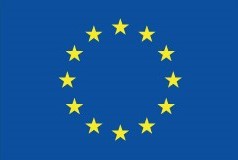- Home
- EU PiG – Animal welfare
EU PiG – Animal welfare
Browse the pig producer case studies and technical reports, which share best practices in animal welfare. The producers are EU PiG Ambassadors and winners of the annual EU PiG Grand Prix, who have focused on one of the specific animal welfare challenges chosen by the industry each year.
A network of experts forming the EU PiG Animal Welfare Thematic Group consolidates existing industry knowledge and validates the best practice identified through the EU PiG Grand Prix.
This theme is about the care and treatment of livestock through an increased understanding of the welfare requirements of the pig.
Implementing KALINAT approach to fully promote the hyperprolificacy of sows
The increase in pigs born per sow (hyperprolific sows) has caused various production issues relating to ensuring that the piglets have the best chance of survival and, in turn, being profitable animals.
Ambassador: Corentin Nevannen, Eureden Cooperative, France
Publication date: July 2020
Theme: Animal welfare
Challenges: Strategies for dealing with piglets from hyperprolific sows
High-pressure fogging
Pigs have an optimum temperature at which they thrive. Temperatures across Europe in the summer (even Ireland and the UK) can exceed that level, causing stress on pigs and lowering productivity.
Ambassador: John van Paassen, Netherlands
Publication date: July 2020
Theme: Animal welfare
Challenges: Solutions for heat stress
Doors for familiarisation between piglets
When piglets are mixed with other litters during lactation, it facilitates adaptation at weaning, reduces scratches and improves growth rates in the nursery accommodation, this French producer has found.
Ambassador: Anonymous, France
Publication date: February 2020
Theme: Animal welfare
Challenges: Strategies to reduce aggression between animals
Reducing ammonia emissions by separating faeces and urine
Faeces and urine are separated and regularly removed from the finisher pig housing to reduce ammonia production on a Belgian unit run by Akivar. The sloped floor underneath the slatted flooring directs urine so it is collected in a urine gutter, while the faeces are scraped with a newly developed scraper towards a collection pit.
Ambassador: Bart Vanackere, Belgium
Publication date: February 2020
Theme: Animal welfare
Challenges: The quality of the farm atmosphere
Birth management in loose farrowing systems
Piglet losses during lactation have been reduced from 25% to 15% on this breeding unit, equipped with a Pro Dromi loose farrowing system.
Ambassador: Doris Verhovsek, Austria
Publication date: June 2019
Theme: Animal welfare
Challenges: Loose farrowing systems
Novelty in enrichment material
Feed conversion ratio has improved, and pigs have become easier to handle since this finisher unit owner began changing the type of environmental enrichment in each pen every day to promote a sense of novelty for the pigs.
Ambassador: Granja Rosa, Spain
Publication date: June 2019
Theme: Animal welfare
Challenges: Enrichment materials
Entire male production
Spanish farmer Ramon Armengol has a 720-sow, farrow-to-finish ‘closed unit’ producing entire males. Aware of the risks of boar taint and possible welfare issues associated with this, he has introduced several different systems to address them – the results including lower production costs per kilo.
Ambassador: Ramon Armengol, Mas Sant Sebastià, Spain
Publication date: May 2018
Theme: Animal welfare
Challenges: Castration methods
Rearing pigs with intact tails
Tail docking has been banned in Finland since 2003, so the Sikana Oy farm rears its 2,980 finisher pigs with intact tails and uses a number of practical measures to ensure they comply with legislation and maintain both welfare and productivity.
Ambassador: Tiina Puska, Finland
Publication date: May 2018
Theme: Animal welfare
Challenges: Tail docking
Animal welfare best practice challenges
Strategies for dealing with piglets from hyperprolific sows
Strategies to reduce aggression between animals
The quality of the farm atmosphere
Contact
For more information contact EUPig@ahdb.org.uk
This project has received funding from the European Union`s Horizon 2020 research and innovation programme under grant agreement No 727933.
 Government logo
Government logo

